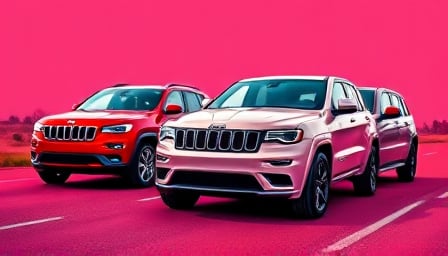Stellantis NV Stumbles Amid EU Emissions Crackdown and U.S. Recall Turmoil
Stellantis NV, once celebrated as a powerhouse in the global automotive arena, now finds itself scrambling under a dual assault of regulatory pressure and product liability. CEO Antonio Filosa has openly challenged the European Union’s ambitious mandate to ban thermal‑engine vehicles by 2035, arguing that the plan is not only impractical but also a betrayal of the company’s strategic interests. Meanwhile, a sprawling recall of 91,787 Jeep Grand Cherokee plug‑in hybrids has rattled investor confidence, casting a long shadow over the company’s financial prospects.
EU Emissions Rules: A Questionable Blueprint
Filosa’s criticism of the EU’s emissions framework is less a plea for flexibility and more a stark indictment of an overreaching regulatory regime that, in his view, favors the Chinese automotive juggernaut over established European players. The CEO contends that the projected decline in electric‑vehicle sales is a mere façade; current market data reveal a plateau, not a surge, in EV adoption. By demanding a 2035 phase‑out, the EU risks crippling the very manufacturers it intends to protect, and Stellantis is positioned as a leading casualty.
The company’s stance highlights a broader systemic flaw: the EU’s one‑size‑fits‑all approach fails to account for regional disparities in consumer preferences and infrastructure readiness. If the EU’s target remains unchanged, Stellantis, along with a handful of other legacy automakers, will be forced to abandon profitable combustion‑engine models prematurely, eroding both market share and revenue streams.
U.S. Recall: A Corporate Liability Minefield
The recall of nearly a hundred thousand Jeep Grand Cherokees is not merely a logistical headache—it is a public relations debacle that exposes weaknesses in Stellantis’ quality assurance protocols. The software glitch, which can abruptly sever drive power, poses tangible safety risks that regulators and consumers alike will scrutinize. This recall spans model years 2022 through 2026, implicating a significant portion of the company’s recent sales pipeline.
Investors, naturally, are on high alert. While the recall’s financial impact may be absorbed in the short term, the reputational damage could reverberate long after the immediate costs are settled. In an era where brand integrity is as valuable as product performance, such lapses erode stakeholder trust and could lead to tighter regulatory scrutiny down the line.
Stock Performance: A Glimmer Amid Turbulence
Despite these headwinds, Stellantis’ stock price has shown a modest uptick, buoyed by analysts who remain cautiously optimistic about the company’s ability to pivot. However, optimism must be tempered by reality: the European car market is projected to contract sharply, and only a narrow cohort of manufacturers appears capable of meeting the EU’s stringent carbon targets.
This divergence between market performance and underlying fundamentals signals a fragile equilibrium. Should the company fail to adjust its strategy swiftly—whether through accelerated EV development, cost optimization, or strategic partnerships—the current growth trajectory could stall or reverse.
Chinese Battery Makers: The New Competitive Frontier
A looming threat to Stellantis’ European dominance is the entrance of Chinese battery manufacturers, particularly CATL. With a planned production facility in Hungary slated for early 2026, CATL is set to inject significant capital and technological prowess into the continent’s battery supply chain. This move threatens to tilt the competitive balance further, offering European consumers high‑performance, cost‑effective battery options that directly compete with Stellantis’ own offerings.
The company must therefore reassess its supply‑chain strategy. Relying on external battery suppliers risks ceding control over a critical component, while failing to secure a foothold in the emerging battery market could leave Stellantis stranded as competitors gain a decisive edge.
Conclusion: Survival Depends on Strategic Agility
Stellantis NV’s current trajectory underscores a stark reality: the automotive landscape is in flux, and legacy manufacturers can no longer afford complacency. The dual pressures of an aggressive EU emissions agenda and a high‑profile recall expose systemic vulnerabilities that require immediate, decisive action. Simultaneously, the impending entry of Chinese battery manufacturers into the European market signals that strategic agility is not merely advantageous—it is essential.
For Stellantis to preserve its market share and sustain shareholder value, the company must:
- Reevaluate its compliance posture with EU regulations, advocating for realistic, phased timelines that reflect market realities.
- Accelerate quality control reforms to mitigate future recalls and rebuild consumer trust.
- Diversify its battery supply chain to secure competitive pricing and technological leadership.
- Invest aggressively in EV platforms that align with both regulatory requirements and consumer demand.
In the absence of such reforms, Stellantis risks becoming a cautionary tale of a once‑dominant manufacturer undone by regulatory overreach, operational shortcomings, and strategic inertia. The road ahead is not merely challenging—it is unforgiving, and only those who act with conviction and precision will survive the automotive revolution.
